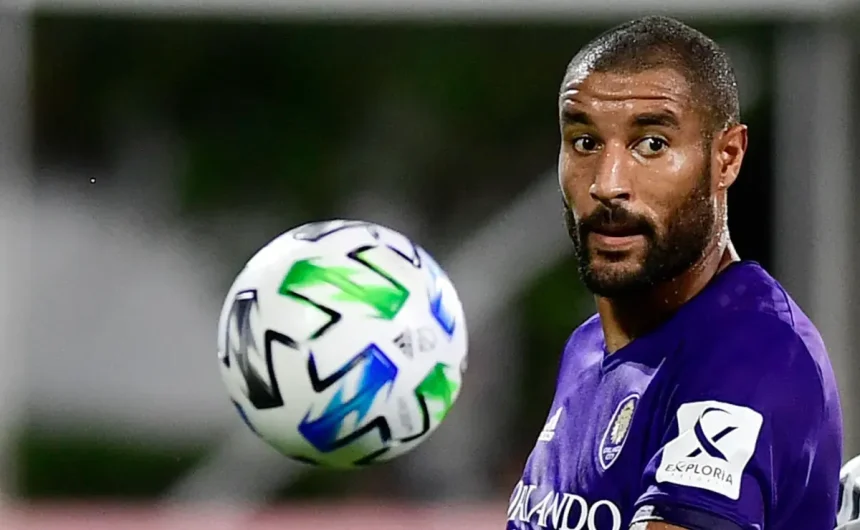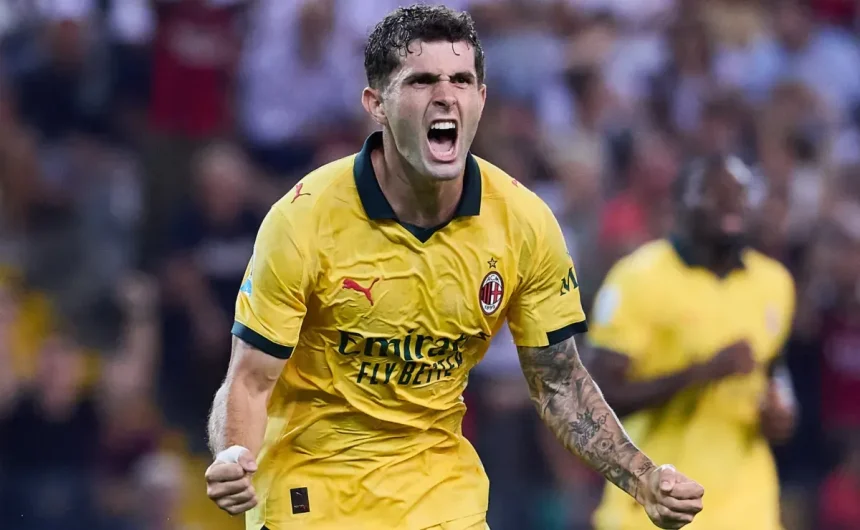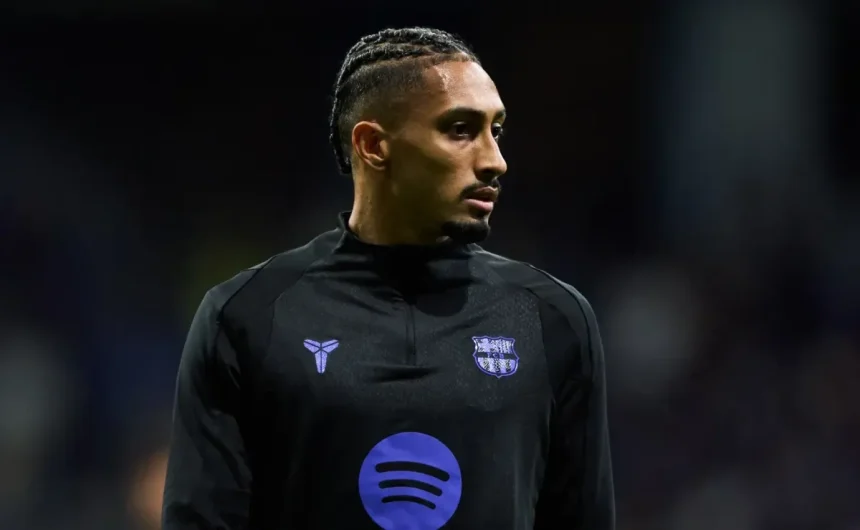At 33 years of age, Tesho Akindele has lived in a number of different locations across the United States from Colorado to Texas to Florida to North Carolina. However, his journey began not in the USA, but Canada.
Born in Calgary to a Nigerian father and a Canadian mother, Akindele bounced around from Calgary to Mississauga to Toronto before moving to Thornton, Colorado at seven years of age, where he began playing for the Northglenn High School soccer team. Similar to many other members of the diaspora like Callum Hudson-Odoi, Jerome Opoku, and Daryl Dike, Akindele remained in touch with his West African roots despite living on the other side of the world.
“I think my Nigerian roots played a huge role in my career,” stated Akindele in an exclusive World Soccer Talk interview. “Starting with the reason I play soccer, it’s in my Nigerian dad’s blood. As soon as I could walk, we were playing soccer. One of my earliest memories is us playing balloon soccer in our living room. I remember my dad, he’d balance the ball on his head, and I’d be slamming into him, trying to get the ball off his head while he’s walking towards my goal. So I remember that part, and then as I got older as well, it helped me a lot.”
“Back then, long-distance phone calls were a big deal. Once a month, we’d make some early morning phone calls with family from Nigeria. I’m on one end, and the phone is just getting passed around on the other end. And then I think another thing that my dad did really well, especially when we moved to Colorado, there were groups of Nigerian meetups. We would be going to these functions, two or three times a year where there were hundreds of Nigerian people. So, we’d be there, traditional clothes, parties, dances, and traditional food. And the older I got, my dad’s family started coming over. My cousins, aunts and uncles started coming over from Nigeria, so my dad definitely did a good job connecting us to that heritage.”
He rejected an offer to join Colorado Rapids’ academy at 17 in order to enroll at the Colorado School of Mines, where he emerged as their all-time leading scorer (76 goals) and a four-time All-American. It’s why, just a few months away from achieving an electrical engineering degree, Akindele decided to quit his studies and put all of his eggs into one basket – that of becoming a professional soccer player. Eventually, his gamble paid off; on January 16, 2014, FC Dallas selected Akindele with the sixth overall pick of the MLS SuperDraft, making him the highest-drafted NCAA Division II player in MLS history.
“When I was in school, my parents would give me money every month for food, but then, I told them that I withdrew from school. At that point, I didn’t even know if I was going to be invited to the Draft Combine or if I was going to get drafted, but I felt that it was my chance to make it as a professional. I asked my parents to give me money for food for three more months in case I didn’t get picked and needed to find a USL team. I wasn’t sure if I would make it to the MLS or not. They said, ‘No, we’re giving you money just to go to school. If you don’t want to be in school, that’s fine, but that’s a decision that you’ve got to make and figure out for yourself.’ I was worried, but luckily, I got drafted, and it ended up not being a problem.”
“My mom gave me one check for $300 or something like that, and it was like, ‘Okay, if you actually do need it, here’s one last check.’ And I still have that check in my room to this day. I didn’t have to cash it, but I was down to the end and really betting on myself. I appreciate that my parents put me in that position, because it was like, ‘Do you really believe in yourself and want this, or not?’ They weren’t disappointed that I left, but they also weren’t anticipating me to go down that path.”
Three months after being drafted, Akindele made his professional debut for Dallas. He quickly went from a benchwarmer to a key figure in attack, scoring 8 goals and 5 assists in 32 appearances and winning the 2014 MLS AT&T Rookie of the Year. He continued his impressive form in 2015, scoring 6 goals and 1 assist in 32 appearances for Dallas, in addition to making his international debut for Canada. Akindele scored 3 goals in 19 caps and competed in the 2015 and 2021 Gold Cups, serving as a valuable figure in attack as Canada went from the laughingstock of the region to one of North America’s strongest sides. And after returning to the World Cup after 36 years in 2022, Canada will be competing in their third World Cup in 2026 and co-hosting the biggest tournament in sports alongside the USA and Mexico. “I think Canada will do great, assuming players can stay healthy. They’ve got so many talented players,” added Akindele.
After an impressive spell in Texas that saw him score 28 goals and 13 assists in 164 appearances and spearhead Dallas to their first trophy in 19 years with the 2016 U.S. Open Cup and 2016 Supporters’ Shield, Akindele left for Orlando City in December 2018, where he enjoyed a career resurgence. Akindele led Orlando to their first-ever trophy with the 2022 U.S. Open Cup and racked up 21 goals in 121 appearances before retiring from soccer at the end of the 2022 campaign and moving to Charlotte. But while he’s no longer playing soccer at the professional level, Akindele remains closely connected with the beautiful game, whether that’s watching Lionel Messi play in MLS or mentoring his son on the pitch or playing alongside his friends in the local parks.
“Lionel Messi has had a great impact in MLS, bringing so many people to all of his games, breaking records, and, when I go to the park with my son after school, I see more Messi jerseys than Charlotte FC jerseys,” Akindele said.
“I still love soccer and still watch a lot of games. I just love being a soccer dad right now, I love going and watching my oldest son play real soccer games, watching him just figure it out out there on the field. That’s been exciting. I’ve played a little bit here in Charlotte. The guy who owns the coffee shop here at Camp North End plays on an adult team, and every once in a while, he’s like, ‘Dude, we have no players, can you come out and play with us?’ So I’ve played with them a few times, and I’ve also played street soccer with Uptown FC, who will meet every Sunday and play 3-a-side or 4-a-side on these little mini-pitches, playing in a parking lot or under a bridge, and I’ve enjoyed that. Honestly, my biggest worry with playing soccer is getting injured. I’m a little bit older now and I’m worried about people tackling me too hard. If I play on an 11v11 field, I’m worried about sprinting and pulling my hamstring or something like that. I like the small-sided games, where people don’t tackle too hard, and I don’t have to go full-out sprint and worry about my hamstrings.”
Since hanging up his boots at the age of 30, Akindele has made just one fleeting return to professional football, playing once for Des Moines Menace in a U.S. Open Cup match against Union Omaha in April 2024. Today, his main focuses are raising his two young sons with his wife Taylor, and working as a Development Analyst for Camp North End, a renovated 76-acre industrial complex in Charlotte with food, retail, art, and entertainment, including murals, sculptures, and diverse food options.
“I work at a place called Camp North End, which is a mile north of Uptown Charlotte. It’s a huge area, about the size of 14 square blocks of a downtown, and we’re taking these old buildings and constructing new stuff on the site. We’re redeveloping these buildings that were built in the 1920s and 1940s and also building brand new apartments here. The way I frame it is, ‘We’re building a neighborhood here,’ because at the end of the day, we’re gonna have 2,000 apartments on this property, and 2 million square feet of offices and small businesses and coffee shops. There are so many layers to real estate development, but it’s like being a project manager in some sense because you need to just gather people. There are the architects, the city engineers, the investors, and the general contractors, and a developer’s job is to corral those people and point them in the right direction to make sure the project gets completed, so that I’m not the only one taking on this whole gigantic project, but I’m one of the members on the team. Basically, we’re project managing towards building a better neighborhood.”













